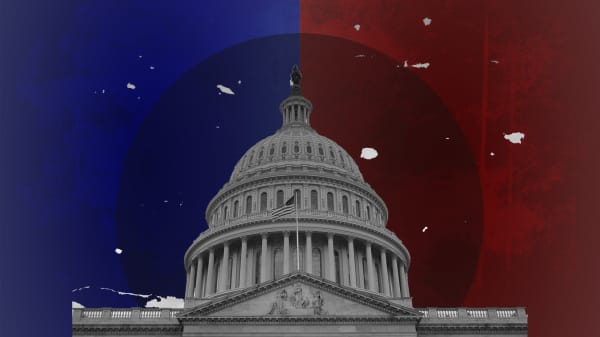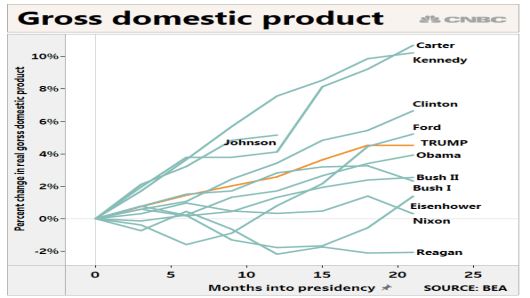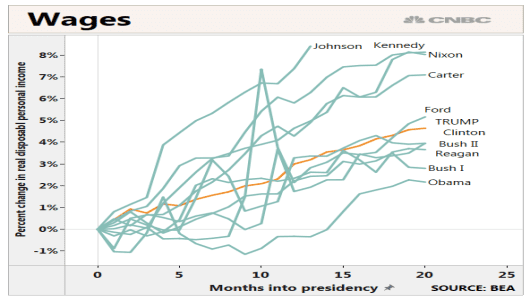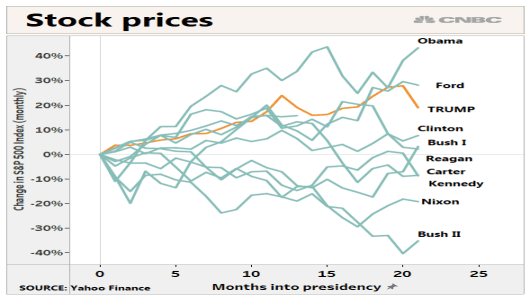To hear President Donald Trump tell it, the U.S. economy is experiencing an economic boom unlike any period in its history under his leadership.
A closer look at the numbers, though, show that claim is questionable.
With just days left before a critical midterm election, Trump has been barnstorming the country in a series of rallies reminiscent of his 2016 presidential campaign. This time around, he is touting his record on the economy, claiming to have created more jobs and expanded economic growth at a pace that not seen by any of his predecessors in the White House.
"Nobody has ever been president that has the greatest economy in the history of our country," Trump told reporters at the White House Thursday. "This is the greatest economy in the history of our country."
Trump touted the latest sign of economic strength in Friday's employment report, which showed a net gain of 250,000 new jobs in October, and wage gains of 3.1 percent from a year ago. That boost in wages was the best since April 2009, when the U.S. was emerging from the Great Recession.
By any measure, those are good numbers. However, they're hardly the "greatest" in U.S. history.
A better way to compare Trump's record is to compare the overall gains in the economy since he took office with those of his predecessors, during the same period in their presidencies. When viewed in that light, Trump's record on most of those measures is decidedly average. Below are four data points that suggest Trump's claims just don't add up.








